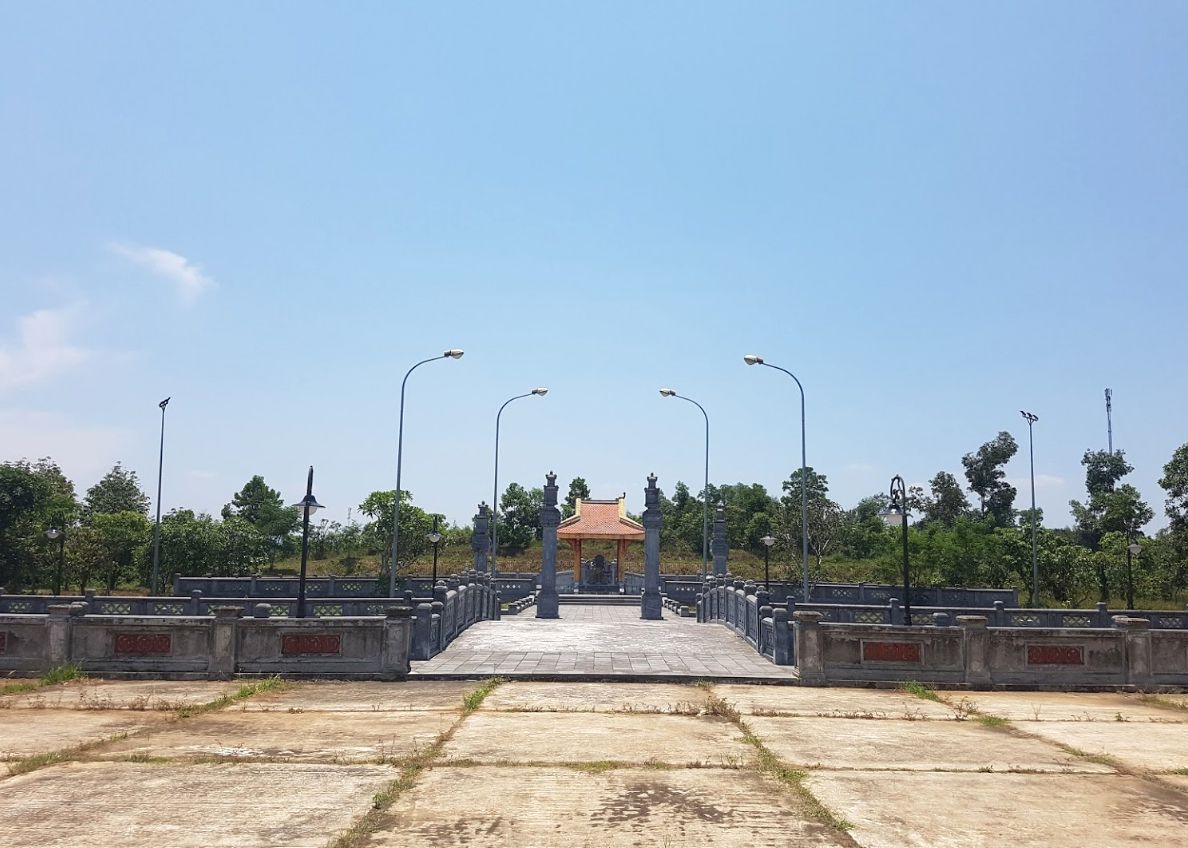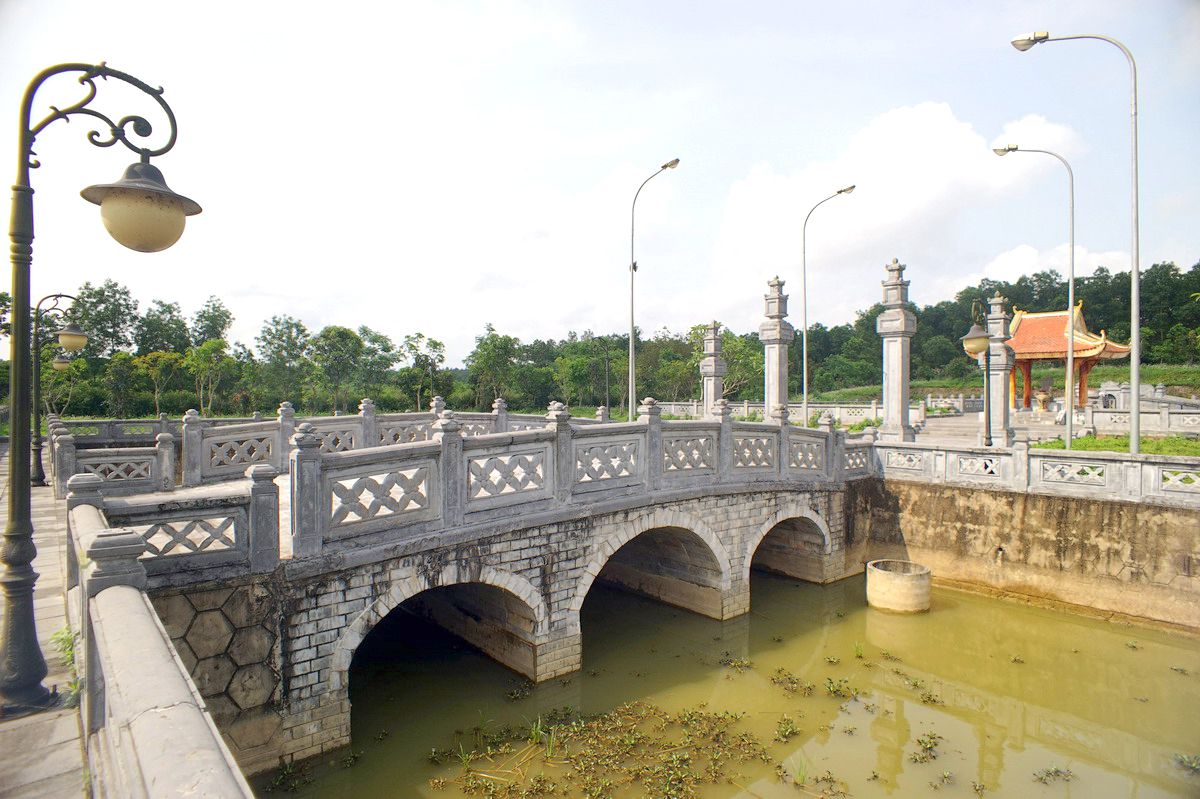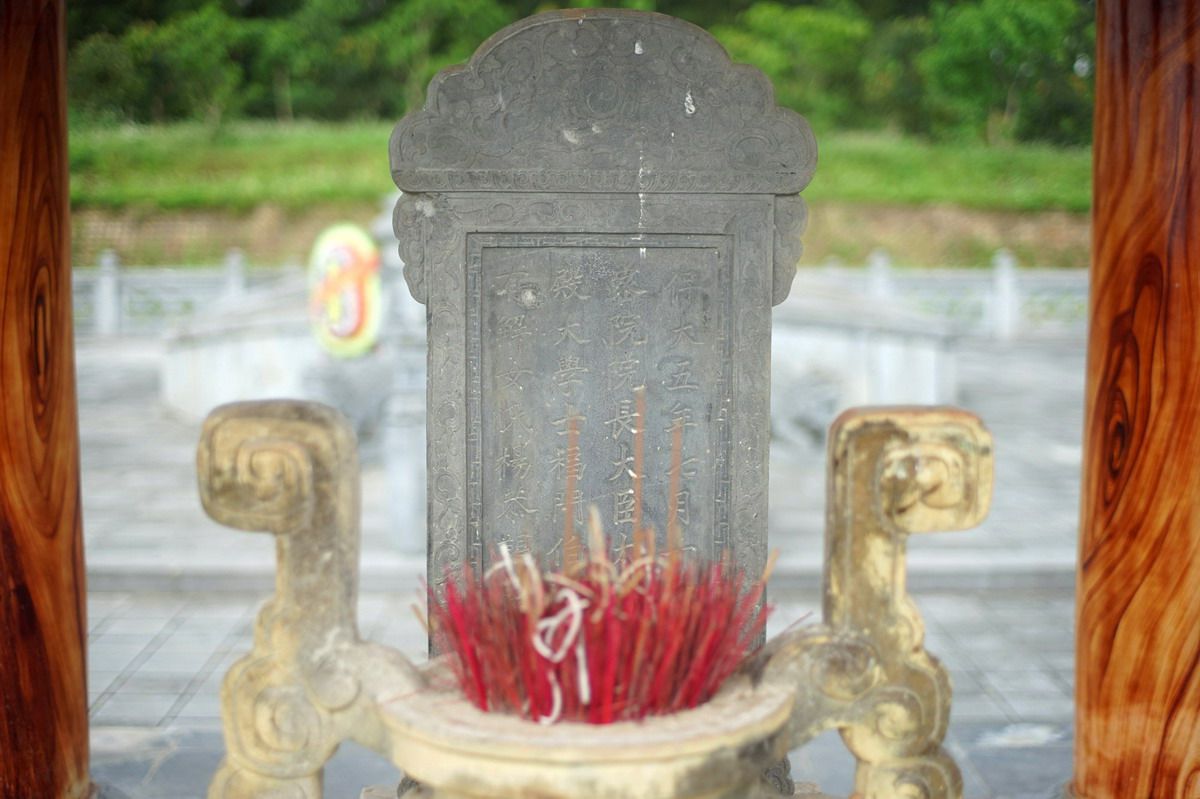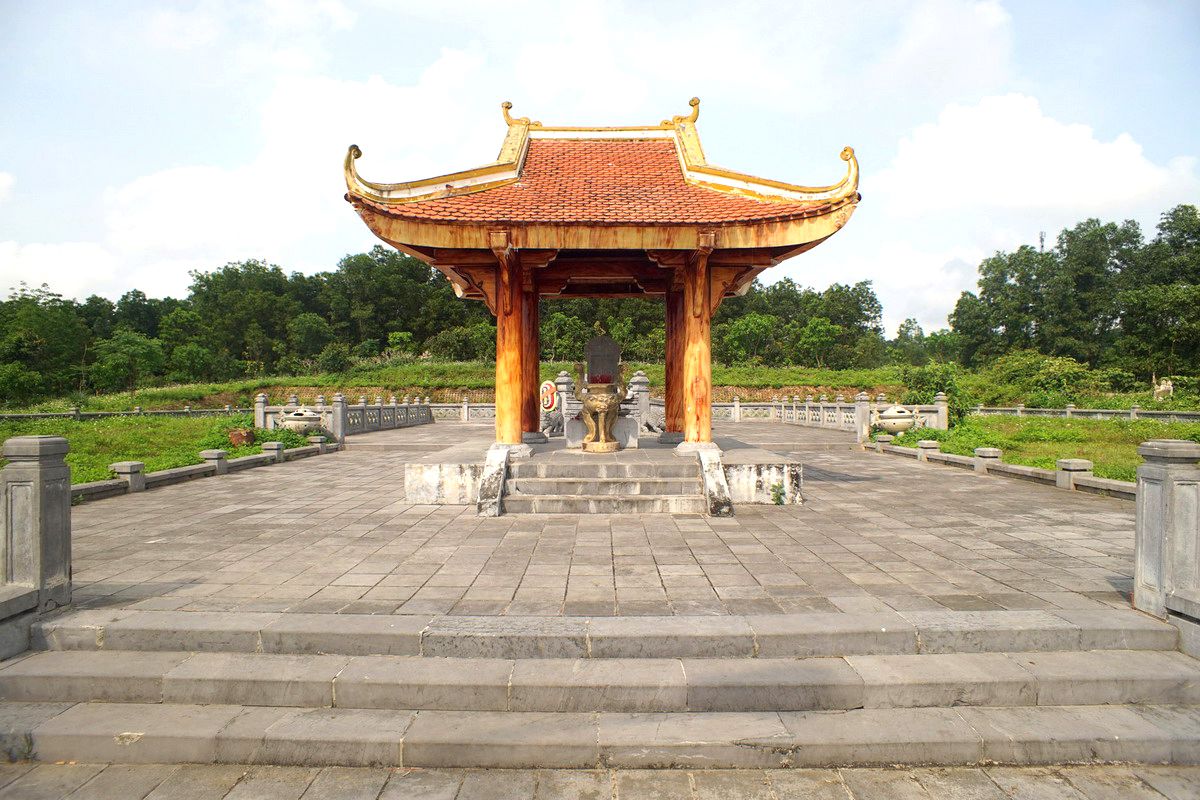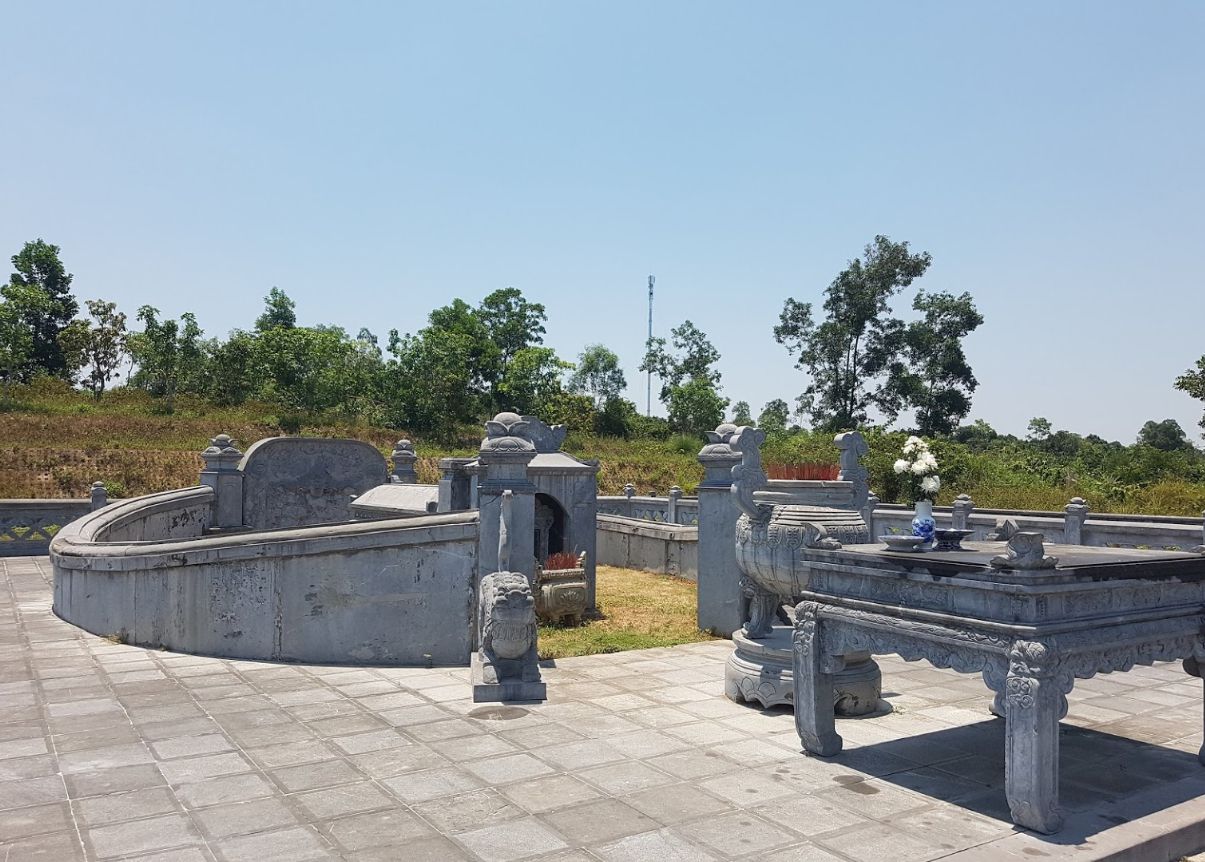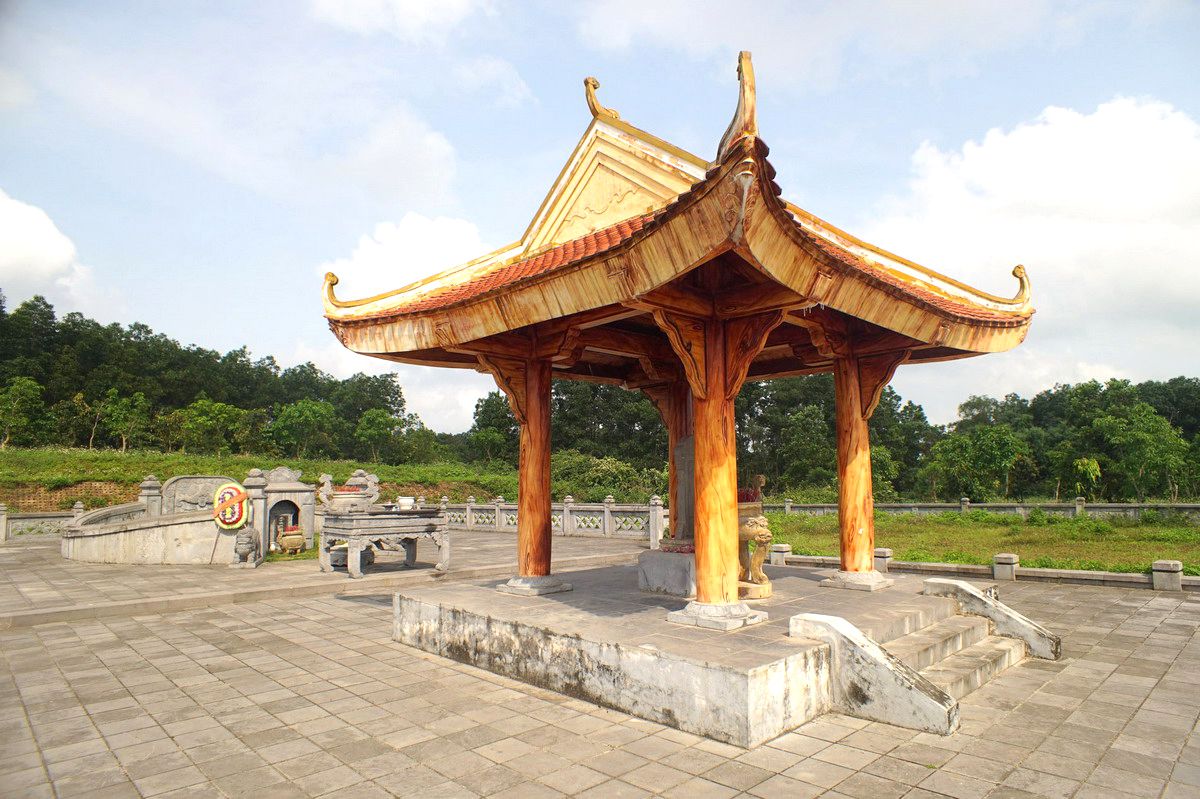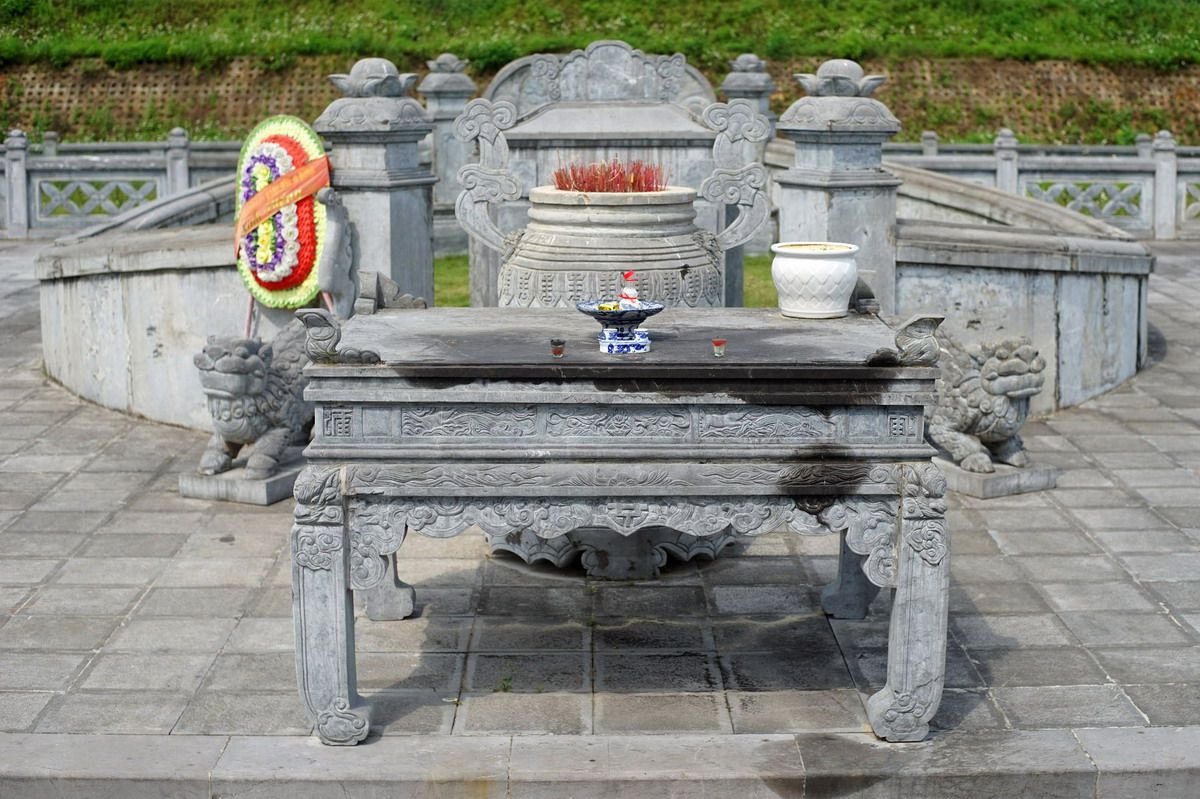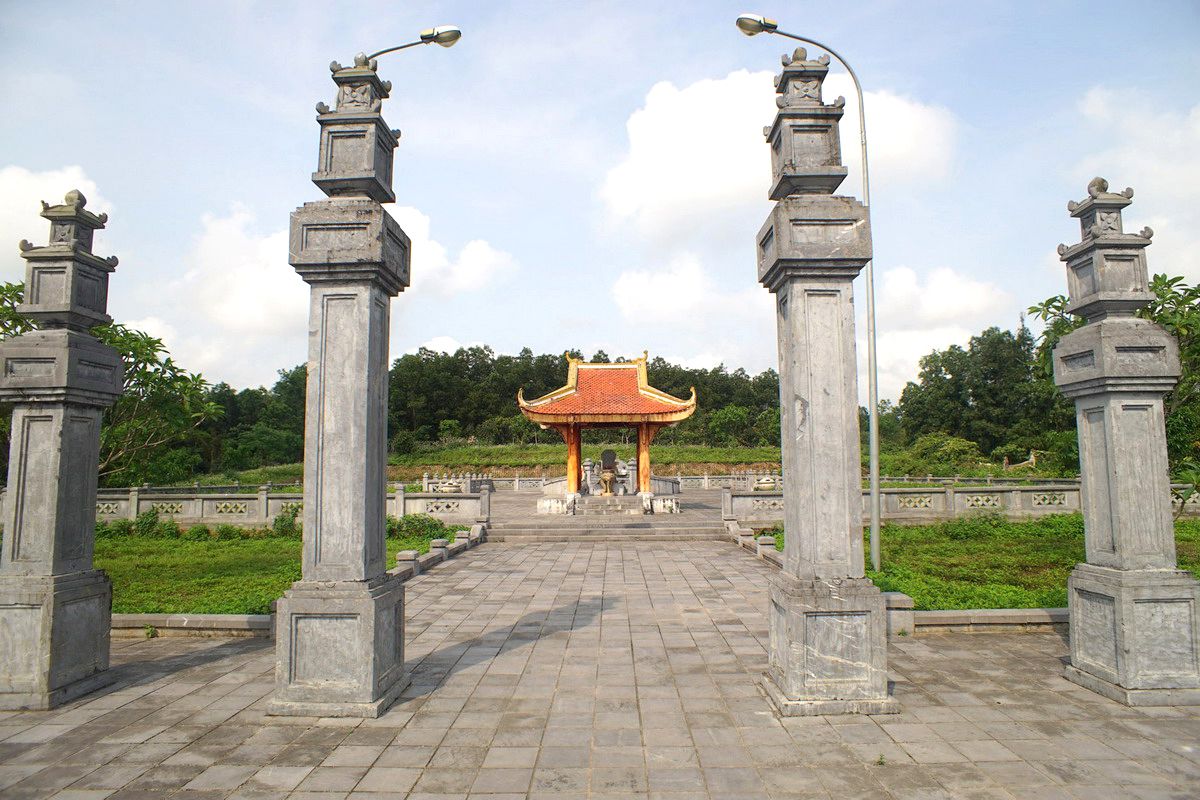Tomb of Nguyen Huu Canh is located on a high hill, spacious and airy space of An Ma mountain range in Truong Thuy commune, Le Thuy district. The ceremony of Thanh Mau Nguyen Huu Canh is a great contributor to the opening of the Southern realm, not only the land of Dong Nai – Gia Dinh on the map of Vietnam but also the regions of Binh Thuan, Vinh Long and An Giang. Vietnamese territory in a unified country. In particular, history evaluates the strategy of the ceremony of the Marquis Nguyen Huu Canh to open a new territory for the country, not by war and violence but by virtue, taking place in peace, national harmony, and religion. teacher.
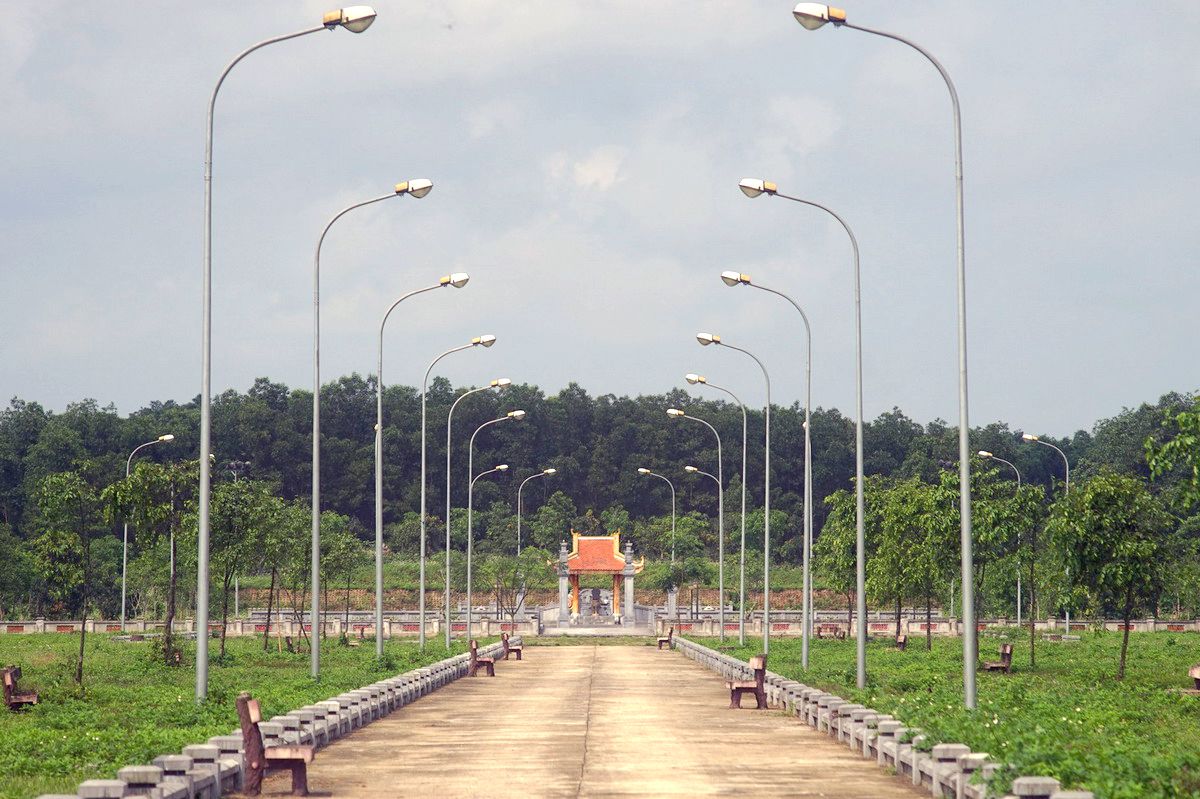
Monument to the Mausoleum of the Emperor Nguyen Huu Canh in Le Thuy – Quang Binh
General Nguyen Huu Canh
Nguyen Huu Canh is the third son of the famous general Nguyen Huu Dat. Belonging to the descendants of the general’s family, the ancestor is Dinh Quoc Cong Nguyen Bac – the founder of the kingdom of the Dinh dynasty – Nguyen Huu Canh is also the 9th grandson of Nguyen Trai – the founder of the Le Dynasty. Born in a traditional family, growing up in the conflicting Trinh – Nguyen dynasties, Nguyen Huu Canh’s talent soon revealed.
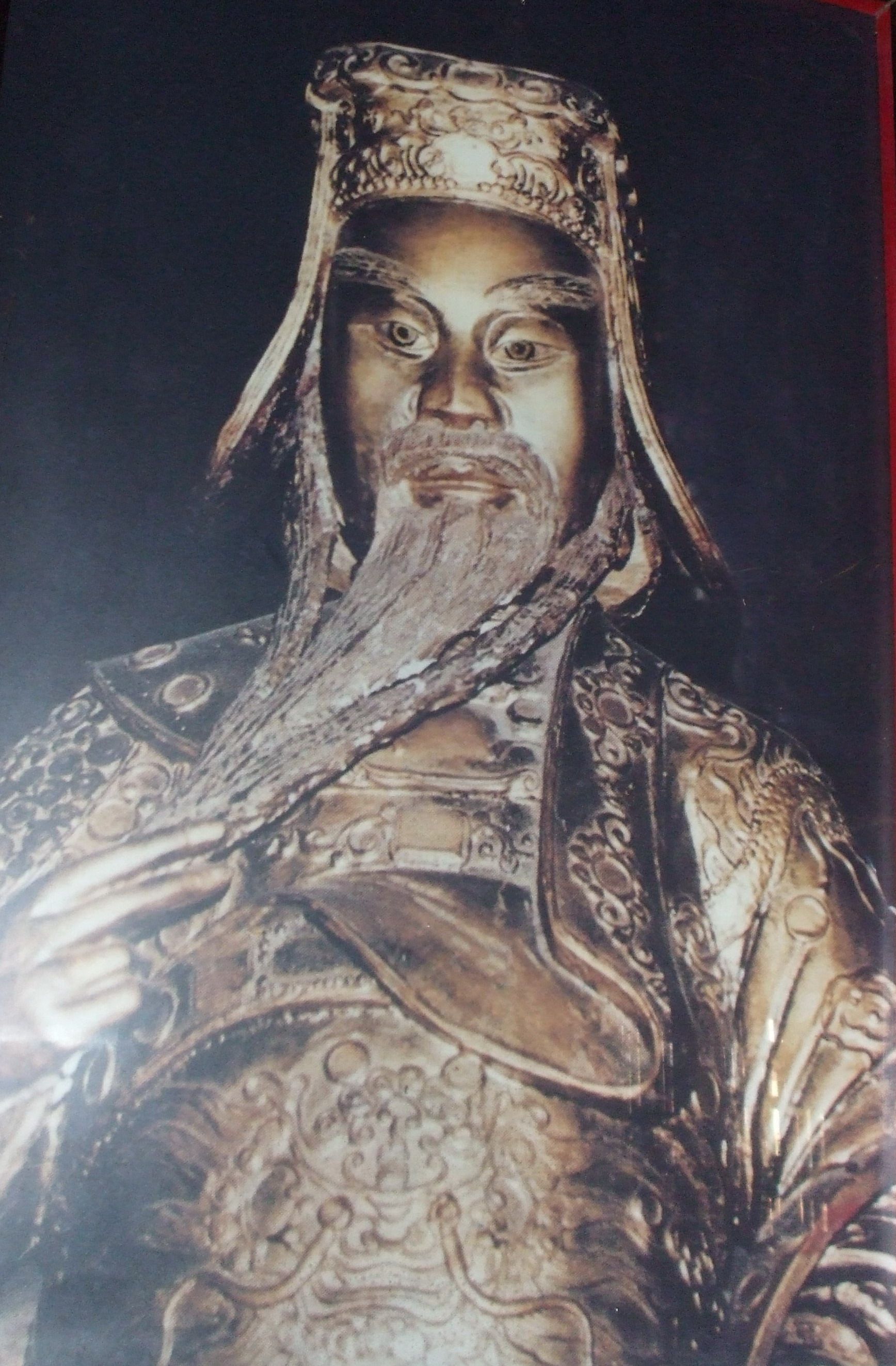
Portrait of famous general Nguyen Huu Canh
In his twenties, Nguyen Huu Canh was famous throughout the region for his martial arts and martial arts. He followed his father to fight everywhere, making many merits, so Lord Nguyen gave him the position of Cai Co. He has a mighty physique, dark skin, born in the year of the Tiger, so people call him by the nickname “Black Tiger”. History also records that he used to bring troops to destroy the Champa dynasty to harass the South.
Merits
In the years 1690-1691, Champa king Ke Ba Tranh often brought troops across the border, killing Vietnamese people in Dien Ninh Dien Khanh). In early 1692, Lord Nguyen sent Nguyen Huu Canh as General of the Army together with Nguyen Dinh Quang’s advisers to bring the balance to the border and establish Thuan Thanh town (present-day Ninh Thuan, Binh Thuan). The pacification had just finished, a group of Qing people, led by Aban, incited the faction to riot. Nguyen Huu Canh again received orders to suppress the traitors, bring security to the people of the county, and then was assigned to guard the Binh Khuong palace (also known as Binh Khang, now Khanh Hoa – Binh Thuan).
Establish new land sovereignty
According to Dai Nam Thuc Luc Tien Bien, in February of the year of the Tiger (1698), Lord Hien Tong Nguyen Phuc Chu (1691-1725) appointed the governor of Binh Khuong, Nguyen Huu Canh, as Governor, and then entered the capital of Dong Nai. . This land at that time included from the area of Cu Lao Pho (ie Chau Dai Pho, formerly Tran Bien Palace, now in Bien Hoa City) to My Tho. Here, there are garrison garrison, always responsible for collecting business taxes for the whole region. At that time, the population was about 40,000 households, including both natives and exiles (Vietnamese, Chinese, Cham…).
He set up barracks at Cu Lao Pho, together with officials under his command set up the administrative apparatus in the new land. He set the Southern region as Gia Dinh’s government, Dong Nai’s Phuoc Long district, and Tran Bien palace; took Saigon as Tan Binh district, built Phien Tran palace. Although the time of the visit was short, Nguyen Huu Canh performed a number of important and meaningful works, laying the foundation for the strong reclamation work in the Southern region at that time. From an area of spontaneous exile, Nguyen Huu Canh oriented development, recruiting, recruiting more people, reclaiming land, setting up administrative units, taxing standards, setting up a set of naturalization fields, etc. develop Dong Nai, formalize this new land into the territory of the country.
Although the time of the visit was short, Nguyen Huu Canh performed a number of important and meaningful works, laying the foundation for the strong reclamation work in the South at that time. From an area of spontaneous exile, Nguyen Huu Canh oriented development, recruiting, recruiting more people, reclaiming land, setting up administrative units, taxing standards, setting up a set of naturalization fields, etc. develop Dong Nai, formalize this new land into the territory of the country.
The land was expanded for thousands of miles, allowing people to be recruited from Bo Chanh Chau back inward, to come everywhere, set up wards, hamlets, communes, villages, divide the territory, everyone divide and occupy the land, and fixed taxes. , fill out and set up a set of naturalization records. Since then, the descendants of the Chinese in Tran Bien have established Thanh Ha commune, and in Phien Tran, they have established Minh Huong commune, and then merged them into civil status books.
Dai Nam listed stories (previous, volume 1) credit: “Nguyen Huu Canh recruited wanderers from Chau Bo Chanh (now Quang Binh) back to the South to enter that land (ie Tran Bien and Phien Tran), then set the commune, hamlet, ward, tax quota and write their names in the nail book. And also according to Trinh Hoai Duc, thanks to Nguyen Huu Canh, “the land has expanded more than a thousand miles, the population has increased by 40,000 ha”.
In 1699, King of Chan Lap, Nac Thu (Ang Saur, whose book says Nac Ong Thu) brought his army to attack Dai Viet, Lord Nguyen Phuc Chu again appointed Nguyen Huu Canh as army commander, along with deputy general Pham Cam Long, a general. Nguyen Huu Khanh brought soldiers and warships together with Tran Thuong Xuyen to take care of the suppression and peace of the people. And Nguyen Huu Canh’s marines went straight to La Bich citadel (Nam Vang), defeating Nac Thu’s army.
After King Chan Lap surrendered, “Nguyen Huu Canh sent the boat back to visit and encourage the people, whether Mien, Hoa or Viet, to keep together the spirit of friendliness, turn off the fire and darken the lights together. His gentle, practical actions, sincere gestures of favor made the compatriots extremely fond of him.”
In the fourth month of Canh Thin year (1700), Nguyen Huu Canh pulled an army to stay at Cay Sao islet (the book calls it Cu Lao Jupiter or Moc Moc or Jupiter continent; after the local people are grateful to him, it is called Ong Chuong Islet. , now in Cho Moi, An Giang), and reported victory to the capital. On the way back, Nguyen Huu Canh got sick. May 16, 1700. Nguyen Huu Canh died in Sam Giang (Rach Gam). His coffin was brought to Cu Lao Pho Huyen for burial. After that, he was brought back to be buried in his hometown, Quang Binh.
After his death, Lord Nguyen Phuc Chu deeply mourned and posthumously awarded him the title “Hiep Tan Cong Than, Special Tien Dinh Chuong, Zhuang Hoang Hau”. During the reign of the Nguyen kings (1802-1945), he was again awarded the title “Khai Quoc Cong Than Vo Trang Vo General Vinh An Hau”, “Upper Cong Than Tran Thu Quoc Thu Quoc Chuong Le Thanh Hau”. In 1852, King Tu Duc bestowed the title of “Thuong Dang God” and worshiped at Thai Mieu.
Tomb of the Marquis Nguyen Huu Canh – Le Thuy – Quang Binh
Nguyen Huu Canh was born in 1650 in Phuoc Long village, Chuong Tin, Phong Loc district (now Van Ninh commune, Quang Ninh district, Quang Binh province). He died on May 9, Canh Thin (1770), buried at Cu Lao Pho next to Tran Bien palace, Dong Nai. In 1802, Nguyen Huu Canh’s remains were converted by his descendants and buried in Truong Thuy commune.
Tomb of Thanh Mau Nguyen Huu Canh has been ranked as a national historical relic, becoming a meaningful destination that should not be missed when traveling to Quang Binh. Currently, in the grounds of Nguyen Huu Canh’s tomb in Quang Binh, there is a very valuable stone stele.
Nguyen Huu Canh’s tombstone is carved with blue stone (marble) with a common pattern at the end of the Nguyen Dynasty. Beer is 1.2m high. The front of the stele facing the tomb has 3 lines of Chinese characters, which are translated as:
– Right line: The first pioneer in the South of the Nguyen dynasty.
– Middle line: Grave of Vinh an Marquis Nguyen Huu Kinh.
– Left line: Your 4-generation grandson, who is the ruler of the heroic army, Ngu Duc Hau, Nguyen Huu Man, established a tombstone in Gia Long’s childhood.
The back side of the stele translates as: July 16, 1925 Nguyen Huu Bai, the director of the Institute of Privy, the great minister of the Crown Prince, the Vice President, Phuc Mon Ba University of the Vo Hien Palace, brought her son Thi Duong to worship and set up this tombstone. .
The discovery of the tomb has solved the historical doubts that some previous scientific conferences on his background and career have raised questions that need to be researched and studied about his real grave. in Cu Lao Pho, Rach Gam, Dien Ban, Quang Nam or in Thac Ro – Quang Binh.
Although several centuries have passed, the name and career of Nguyen Huu Canh is forever engraved with the Vietnamese people in general and the people of Quang Binh in particular.
“Principal Ceremony to open the land
Thousand years, descendants will forever write”
The new tomb area was greatly restored in 2013. After the restoration process, the mausoleum of the famous general of the Nguyen Dynasty has a new look with many items built of superficial stone.
Contributing to honoring the historical value and role of Nguyen Huu Canh, contributing to economic and social development, educating patriotic and patriotic spirit for the young generation today and in the future.
Misconception
People in An Giang are still used to calling him Chief of Staff Le, so many people think that he holds the title of Chief of Army. In fact, under the Nguyen Lords, there was no such position. The highest position that Nguyen Huu Canh held during his lifetime was Thong Lui. After his death, Lord Nguyen posthumously conferred the title of Chief of Staff (later called Chief of Staff). Due to the people’s respect for Nguyen Huu Canh, they combined his name and position into Chief of War Le (“Chief” of the Grand Palace or Chief of Staff, “Binh” of Thong Binh and “Lê” is the name) his self).
In Chau Doc town, there was an army barracks named Thuong Dang Le. The correct name should be Thuong Dang Le, because Nguyen Huu Canh was conferred as Thuong Dang public god according to the ordinations in August of the year At Suu (1806) of Gia Long and November 29 of the 5th year of Tu Duc (1852). However, due to long-term use without correction, it has become a folk habit.
Temple
To commemorate the merits of Grand Master Nguyen Huu Canh, in his homeland as well as where he came to rest, people have built temples or created tablets for him, such as in Nam Vang (Cambodia), Quang Binh, and Quang Binh. Nam, Pho Island (Bien Hoa), Dinh Minh Huong Gia Thanh, District 5, City. Ho Chi Minh City, O Mon (Can Tho City) and many places in An Giang province, etc. In addition, his full name and title are also used to name schools and streets in many localities…
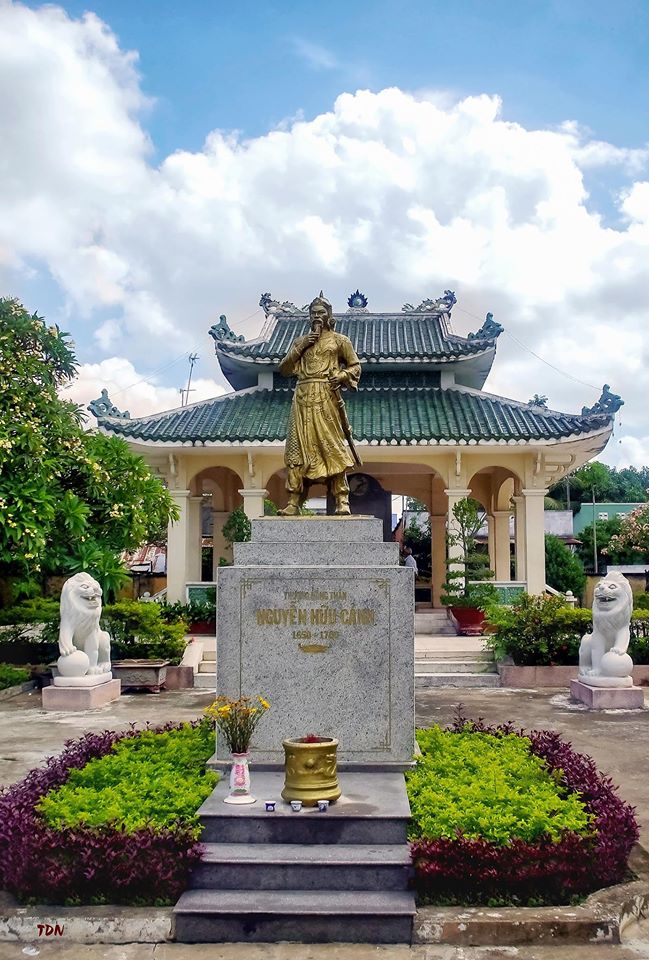
Statue and Temple of Nguyen Huu Canh in Dong Nai
It can be said that he is one of the historical figures worshiped by the people of the South; Many lands and rivers still bear his name along with a system of memorial temples in many southern provinces and cities…
Source: Collected internet.
